What determines the yield of cucumbers in a greenhouse?
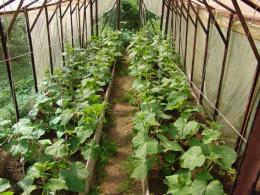
The fresh aroma of cucumbers stimulates the appetite, making even the most bland dish delicious. Therefore, these vegetables are good on the table at any time of the year. But to start enjoying green vegetables as early as possible, you can grow them in a greenhouse. And in order to not be left without fruits after putting in a lot of effort, time and money, you need to know how to increase the yield of cucumbers in a greenhouse.
Content:
Yield conditions
Cucumbers in the greenhouse should feel great: warmth is provided, high humidity is maintained. In such ideal conditions, harvests should be simply record-breaking! But often this is not the case at all.
There are many reasons on which the yield of cucumbers depends. These include:
- choosing the right variety
- correct soil composition
- quality of purchased seeds
- timely disembarkation
- normal planting density
- feeding literacy
- optimal irrigation
- lighting level in the greenhouse
- temperature control
- prevention of possible diseases
- correct pest prevention
- timely harvesting
Soil preparation is important for cucumbers. Even if the site consists of poor soil, the soil in the greenhouse itself should be well enriched. To do this, you need to add green manure (green plant matter), humus, peat, compost and even a little mineral fertilizerswithout exceeding their level.
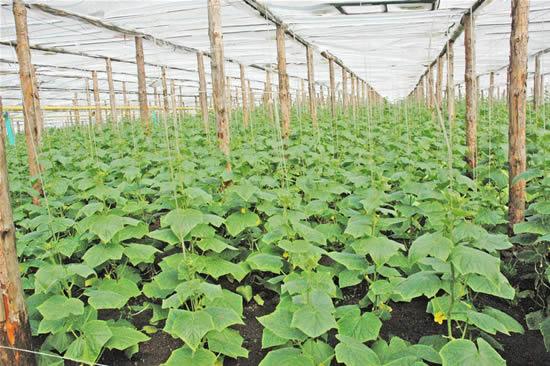
You can fertilize the soil with soil mixture.It is poured on top of heated organic fertilizer, which is biological fuel. At first it is a layer of 15 cm, and then, as the bushes grow, another 10 centimeters are added.
It is also important that the soil temperature when sowing plants should not be lower than 20°C. Even at a depth of ten centimeters, the temperature cannot be less than +18°C, because otherwise the seeds will swell, and the planted seedlings will disappear or will be sick for a long time. In this situation, you cannot count on high yields of cucumbers in a greenhouse.
Moisture is very important for cucumbers. Therefore, they need to be watered generously. It is better to do this with warm water at the roots in the evening, rather than under the scorching sun. You can’t flood the leaves, but the soil needs to be moistened moderately. You can combine watering cucumbers with feeding them with fertilizers - organic or mineral.
To plant didn't get sick, you need to tie up his whips. Indeed, from the contact of tops with wet soil in a greenhouse, various fungal diseases quickly develop, which significantly reduce the yield of cucumbers in the greenhouse.
For the same reason, it is advisable to grow cucumbers on a trellis. Also, this form of bush formation helps to avoid too much density of vines, from which the plant begins to drive away the green mass, losing productivity.
There are many factors on which the yield of cucumbers in a greenhouse depends. But if you lose sight of even one, then all your work will go to waste. Therefore, it is better to take into account all the details in order to get a luxurious harvest of pimply beauties.
Secrets of gardeners
Each gardener has accumulated his own experience in increasing the yield of these vegetables. So many people believe, for example, that cucumbers should be picked daily during the fruiting period.If you do this periodically, the plant receives a signal that its program has been completed and it can “rest.”
In addition to root fertilizer, you can spray the leaves with nitrogen-containing mixtures. You can resort to another simple way to increase the yield of cucumbers in a greenhouse - air feeding. To do this, a container is placed inside the greenhouse in which a mass of organic fertilizers diluted with water ferments. They release nitrogen and carbon dioxide into the air, which are very important for plants.
You can stop watering the cucumbers for a short time, and then resume again. During such stress, plants begin to produce more female flowers with ovaries rather than empty flowers.
The productivity of cucumbers can be increased by timely plant care, strict maintenance of temperature conditions and sufficient lighting. Suitable air and soil humidity is important. Therefore, there is something to work on!
How to prepare and which seeds to choose?
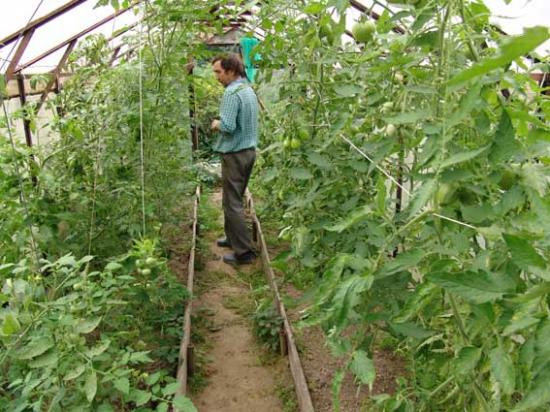
But most consider choosing the right variety of cucumbers to be one of the most important factors in increasing the yield of cucumbers in a greenhouse. According to experienced gardeners, it is important to give preference to parthenocarpics that do not require pollination by bees or wind. This is important, because otherwise vegetables indoors will not be able to set fruit, which means there will be no harvest.
Many gardeners like to mix hybrids and bee-pollinated varieties. This form allows you to get a harvest and collect high-quality seeds. After all, hybrids themselves do not produce a harvest in the second generation, splitting into several subspecies of the variety.
It is better to pay attention to varieties intended specifically for greenhouse cultivation. Also important are the timing of ripening and the variety’s compliance with the given climatic conditions, even if mitigated by the greenhouse. The optimal solution may be to select several varieties of seeds.
According to practitioners, it is better to give preference to these early varieties and hybrids:
- Moscow greenhouse
- Zozule
- Lade
- April
- Malachite
- Cucarache
- Stella
- Marfinsky
- Dinzoshi
- Marathon
- Biryuse
- Relay race
- Altai early 166
- Grenade
- Graceful
- Maisky
- VIR 516 and 517
- Gribovsky 2
- Nerosimoy is 40 and many others
It is believed that cucumber seeds heated in the sun before sowing will give a better harvest. And even the best in terms of yield are those seeds that have been stored for about 7 years (naturally, in the right conditions).
Video instructions for growing cucumbers in a greenhouse:
Interesting information about the vegetable garden

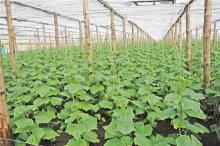

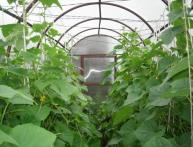


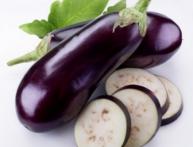
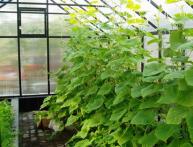
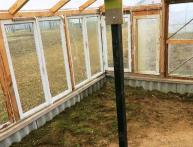

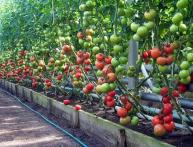
Comments
Yes, we have always had a problem with pollination of cucumbers in the greenhouse. And also maintaining the humidity regime so that they don’t simmer in the heat.